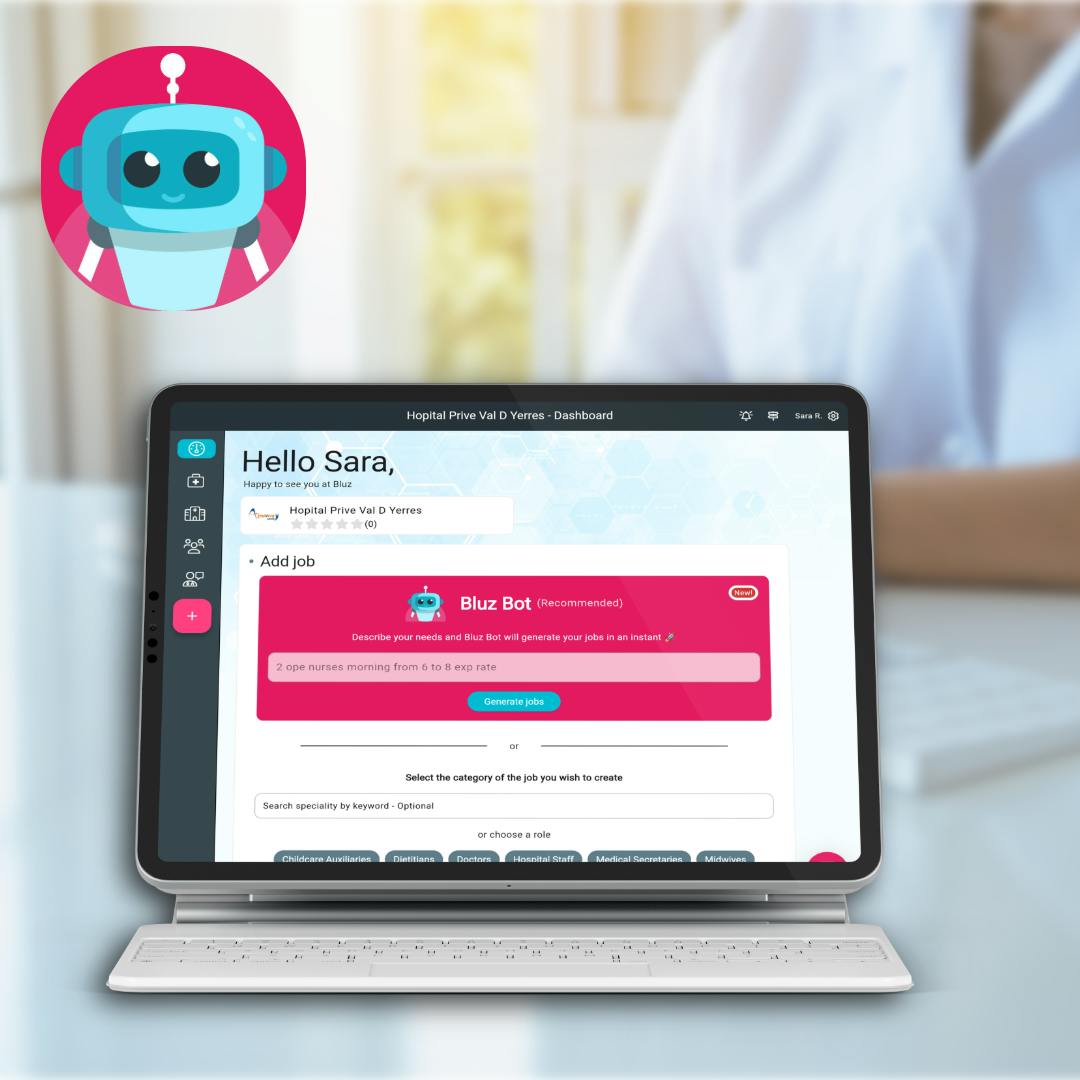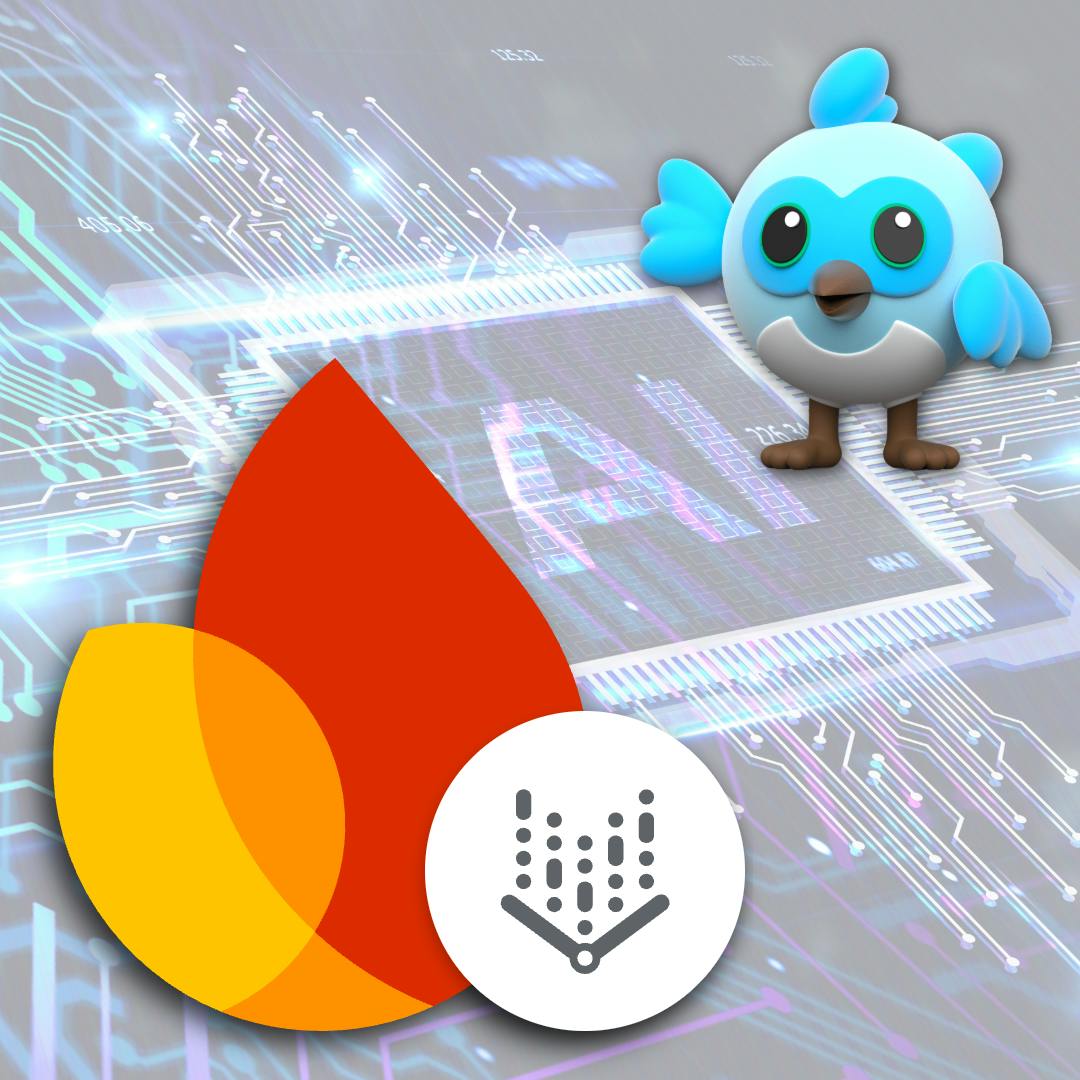
Using Firebase AI in Flutter Apps: A Case Study with Bluz

Author: Mat Wright
View profile
The rise of AI in mobile applications is reshaping how we interact with digital systems. In the case of Bluz, a Campfire Digital partner project providing an innovative recruitment platform for healthcare professionals, the integration of AI isn’t just a feature - it’s becoming the backbone of a new kind of user experience.
Built with Flutter and Firebase, Bluz is using Firebase’s AI capabilities to push the boundaries of what’s possible in real-time recruitment. In this article, we take a look at three critical use cases that demonstrate how AI is transforming Bluz from a smart job board into a dynamic, assistant-like tool.
AI-Driven CV Summarization
In traditional systems, parsing CVs and extracting the right information can be tedious - not just for recruitment managers, but for the system itself. With Bluz, we’ve leveraged Firebase AI to automate the summarisation of CVs. Whether a nurse uploads a scanned document, a PDF, or a DOCX file, our backend AI models immediately generate a clear, structured summary of the candidate’s experience, specialisms, certifications, and availability.
The result is a set of instant, consistent summaries across the platform - focused on the aspects of a CV that matter most. It helps ensure each candidate is represented fairly, while giving recruiters a clear and comparable overview at a glance.
Data Extraction for Seamless Onboarding
Creating an account on a recruitment platform often involves a series of tedious steps - entering personal details, choosing job categories, and manually filtering for location or qualifications. Bluz simplifies this process using an AI-powered data extraction layer that significantly reduces onboarding time and effort.
Healthcare professionals upload their CV, and within seconds, the AI extracts key information such as:
- Name and contact details
- Location and travel radius
- Job category and certification level
- A brief personal statement or summary
The system then automatically configures the user’s profile and sets predefined job search criteria based on the extracted data. What used to be a 6–8 step process now takes just 2 or 3 steps. In most cases, users then simply need to accept the app’s terms and conditions and enable push notifications - and they’re taken straight to a fully personalized dashboard, ready to browse relevant opportunities.
Natural Language to Instant Vacancies
This is where Bluz really begins to feel like the future. BluzBot, an innovative AI recruitment assistant, empowers hospital recruiters to generate job postings using natural shorthand - no forms required. A recruitment manager might write:

"4x nurses – tomorrow night – surgery & 2x care assts – Tues day-shift – geriatrics"
BluzBot takes over from there. Within seconds, it:
- Parses dates, roles, shift timings, and departments
- Fetches default or pre-configured pay rates
- Builds six individual job postings with the correct metadata
- Pushes them live to the mobile app
No more navigating through dozens of form fields or dropdowns. No need to create each post one at a time. It feels more like sending a message than filling out a form.
How It All Works: Flutter + Firebase AI

From a development perspective, the beauty of this system lies in its tight coupling between the frontend (Flutter) and backend (Firebase). Flutter’s widget-based structure allows real-time feedback as users interact with AI-assisted features. Meanwhile, Firebase provides multiple integration points:
- Callable Cloud Functions trigger AI operations on user input.
- Firestore Triggers auto-process documents uploaded to storage.
- Firebase Extensions allow quick adoption of large-language models (LLMs) and document parsing tools.
- Firebase Hosting & Auth ensure scalability and security in tandem with Google Cloud.
AI isn’t an external API bolted onto the system -it’s embedded deeply into the infrastructure, shaping both frontend UX and backend intelligence.
From Logic Trees to Language Models
To understand the shift we’re seeing, we need to contrast the traditional backend approach with the GPT-style AI approach.
Conventional systems use imperative logic: data enters a backend (say, PHP or Node.js), and functions loop over that data with if-else conditions, regex patterns, and structured outputs. This approach is deterministic and rigid - great for predictable tasks but fragile when faced with ambiguity or shorthand.
In contrast, GPT-based models ingest raw, unstructured prompts and infer intent. They apply probabilistic reasoning and learned patterns to extract meaning, map structure, and even generate missing components. Instead of writing 50 lines of backend code to parse a user sentence, you pass the sentence to a model trained on millions of similar examples - and it delivers structured, usable data.
It’s not just smarter - it’s adaptive. The same model that understands a CV can also handle user queries, internal summarization, and predictive logic. One system, many jobs.
From Forms to Fragments
Perhaps the most profound change introduced by this AI integration is a shift in the nature of user interaction itself.
Where recruitment apps often rely on five to ten-step form based workflows we now see a model where users drop a single sentence into a field, and the system does the rest. Forms are dissolving into frictionless, conversational input. The backend is no longer a logic gate; it's an interpretive partner.
This dynamic, inference-driven backend architecture isn’t just a performance improvement. It’s an evolution of form - from rigid procedural steps to adaptive conversational intelligence. It reflects a wider transformation in software design where human input is honored as messy, expressive, and intuitive, and where AI’s role is to listen, clarify, and act.
A New Form of Backend Intelligence
AI is redefining what a backend is. Instead of routes and controllers crunching well-formed data, our AI backend accepts fragments of human need, and from them, constructs fully-formed, structured outputs.
This transition marks a move away from rule-based programming toward model-based interpretation. It reduces the human burden of form-filling, while increasing the system’s ability to serve in real-world, unpredictable conditions - exactly the kind found in healthcare.
We believe this isn’t just an upgrade in architecture. It’s a new paradigm. And it’s only just begun.
Build Smarter AI Solutions
The work we’ve done on Bluz is just one example of how thoughtful AI integration can transform real-world workflows. At Campfire Digital, we specialize in designing and implementing AI-powered features that are not only technically robust, but user-first and future-ready.
Whether you're building from scratch or looking to bring intelligent automation into your existing product, we're only a phone call away. Let's talk about how we can help you turn raw input into intelligent action - quickly, creatively, and effectively.
Firebase AI, Flutter, Vertex AI